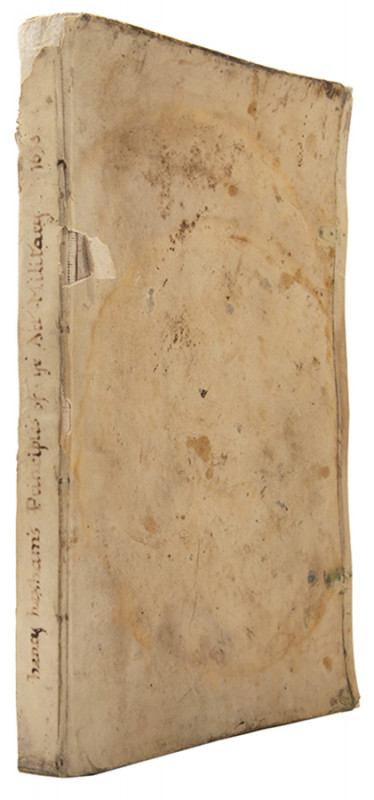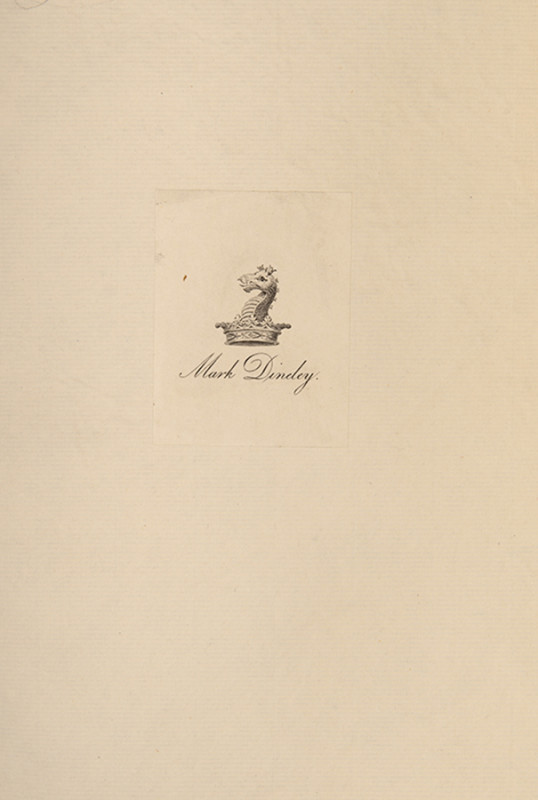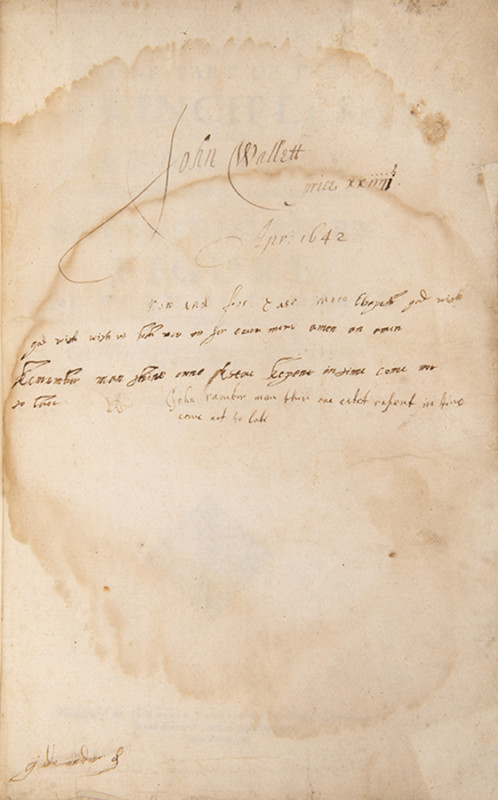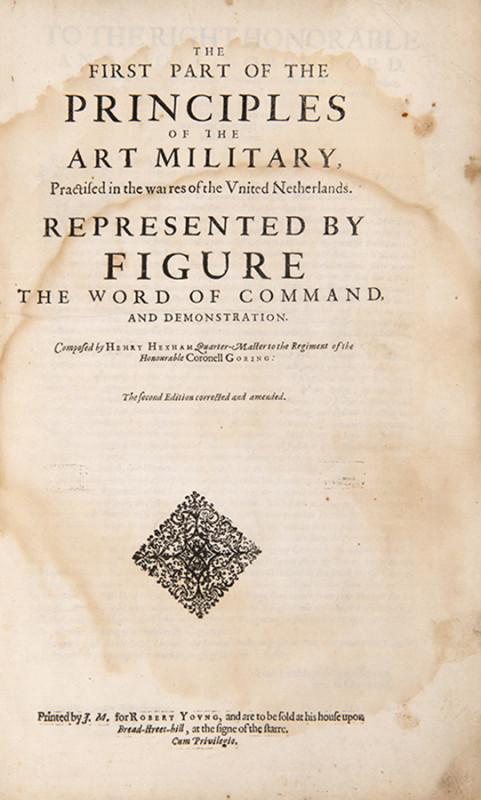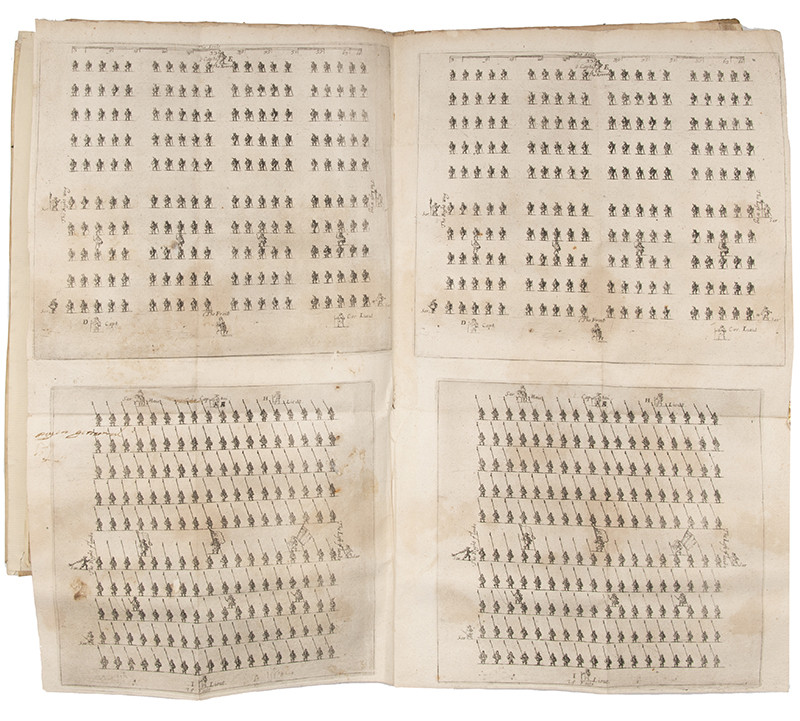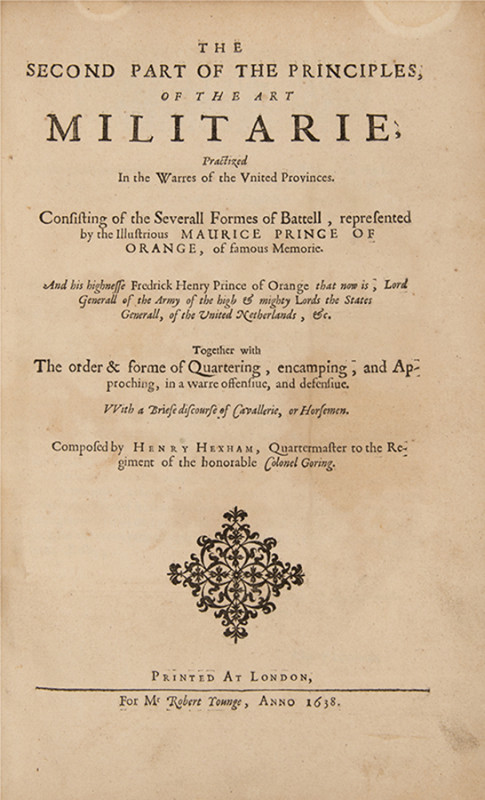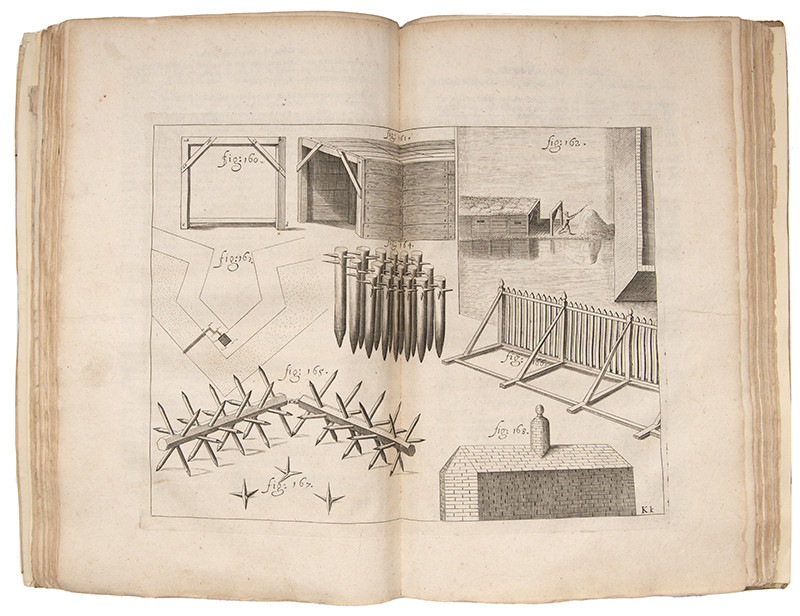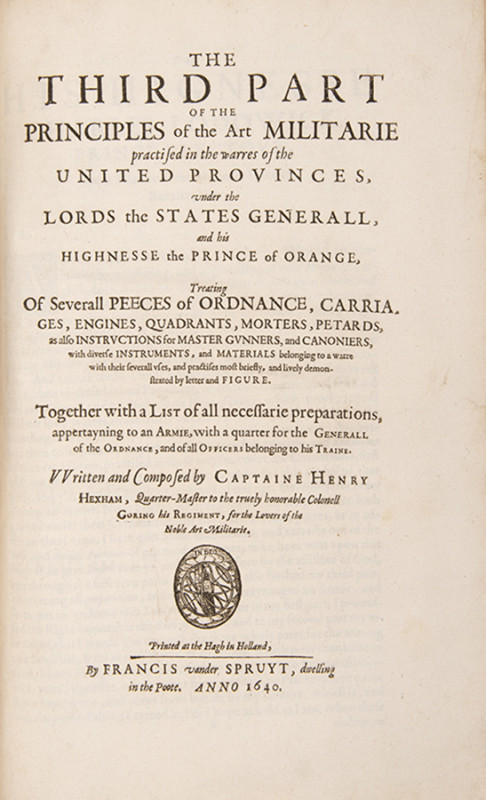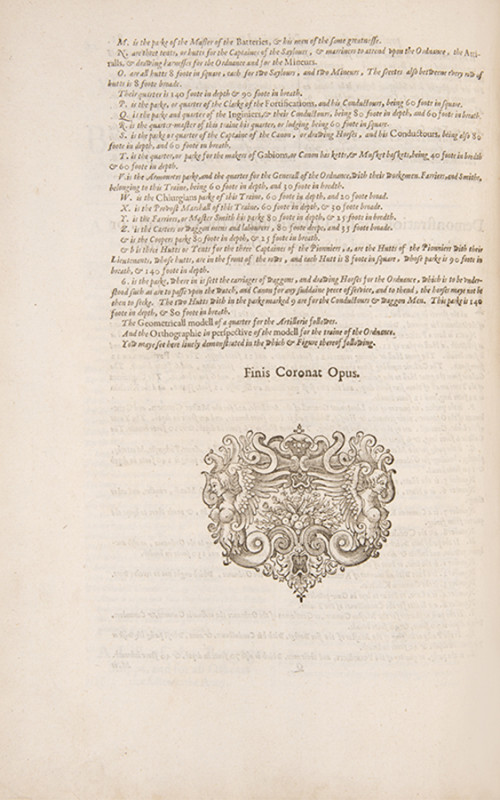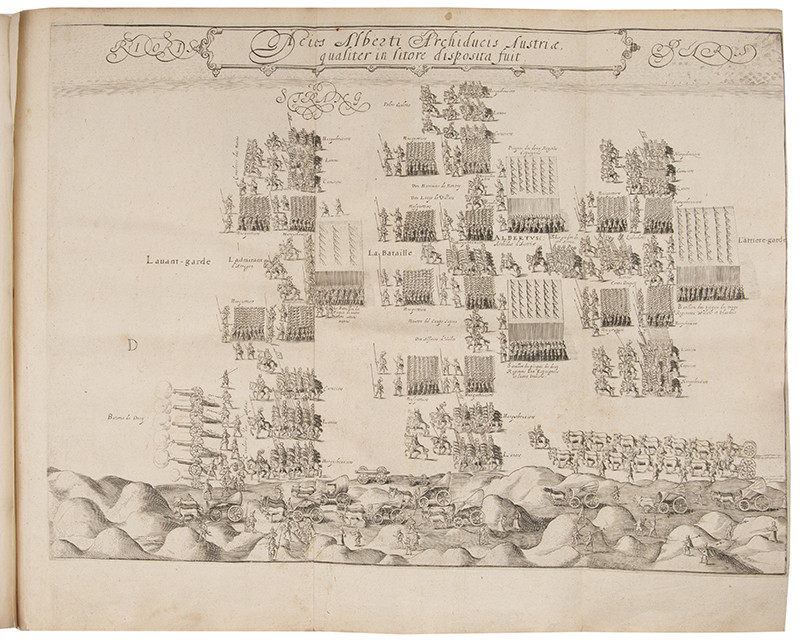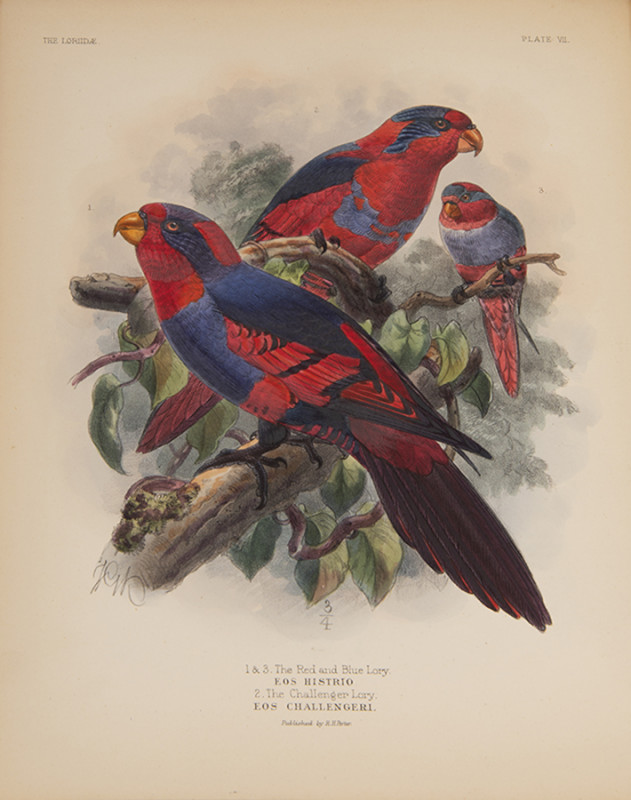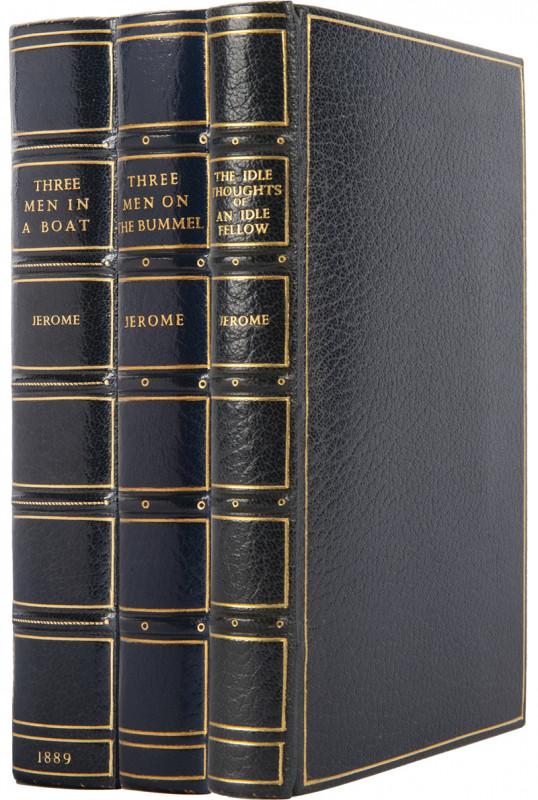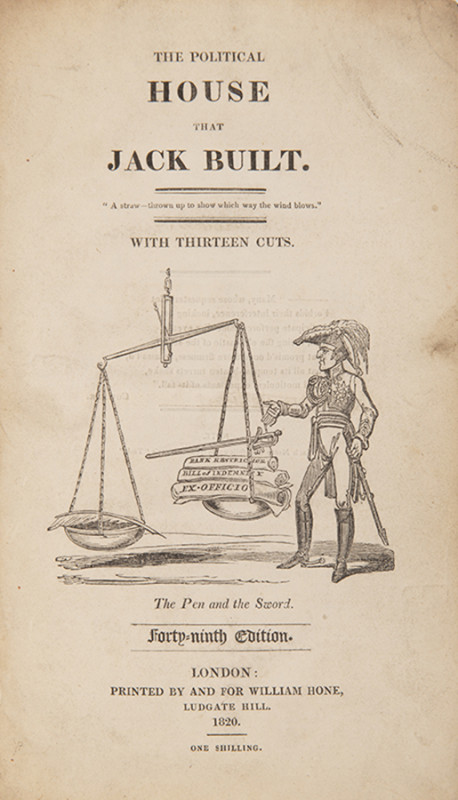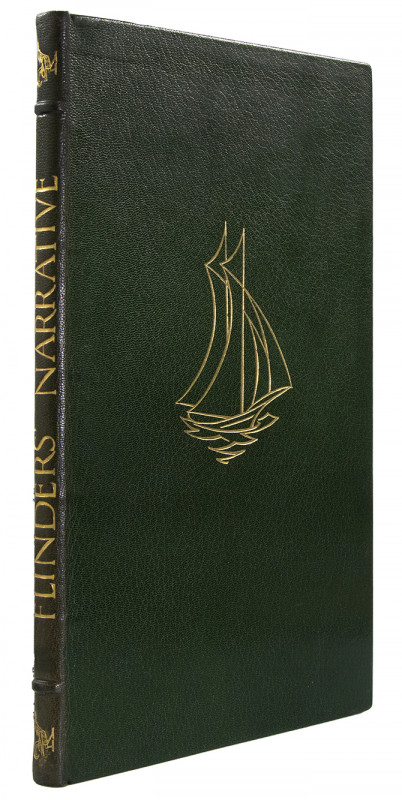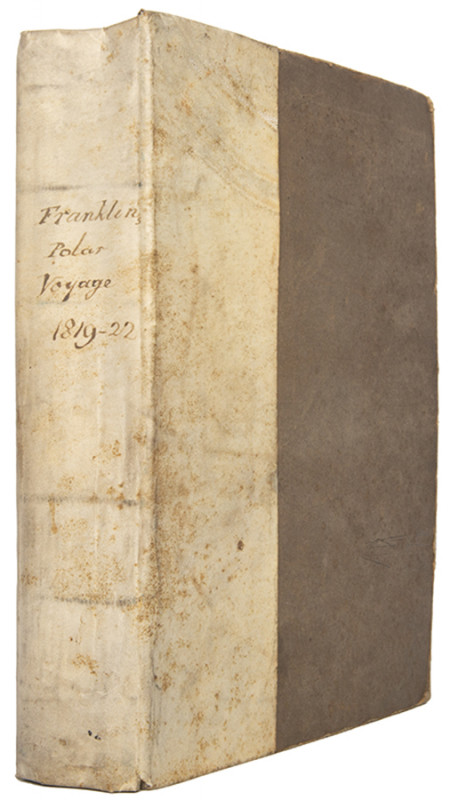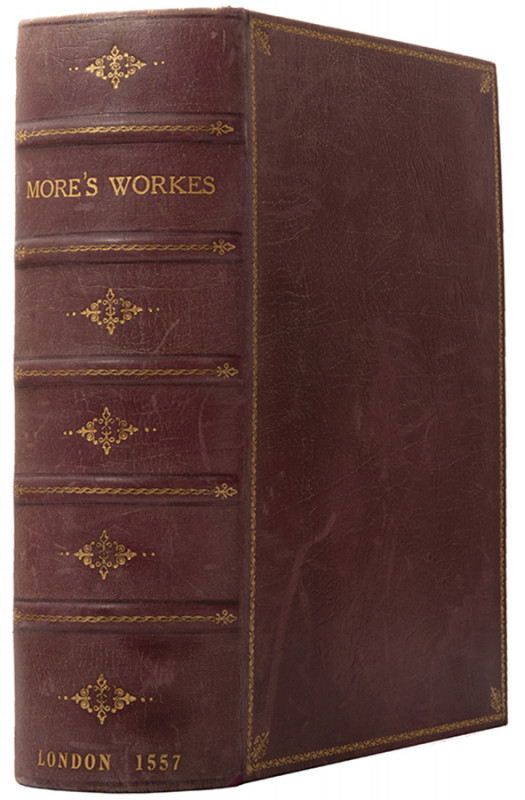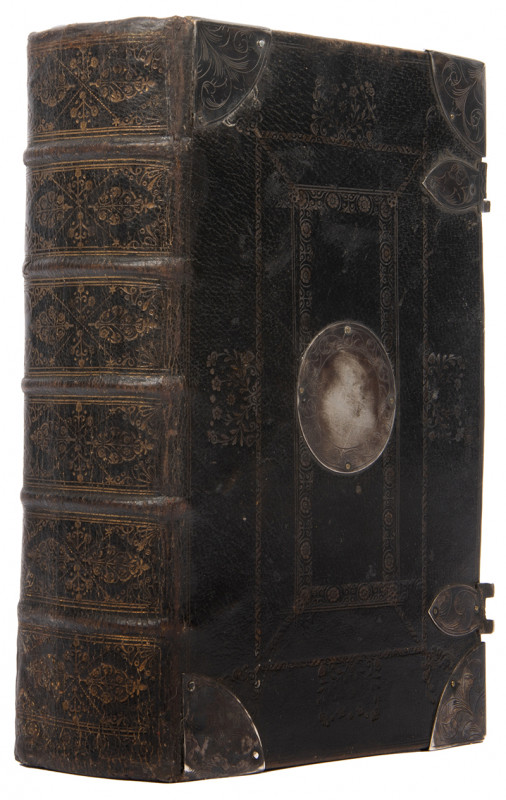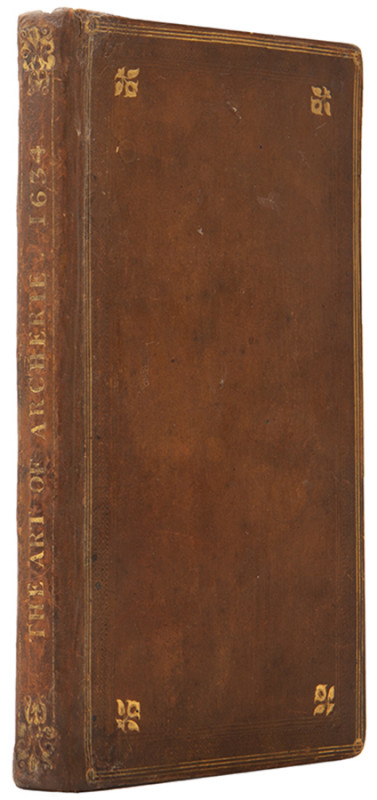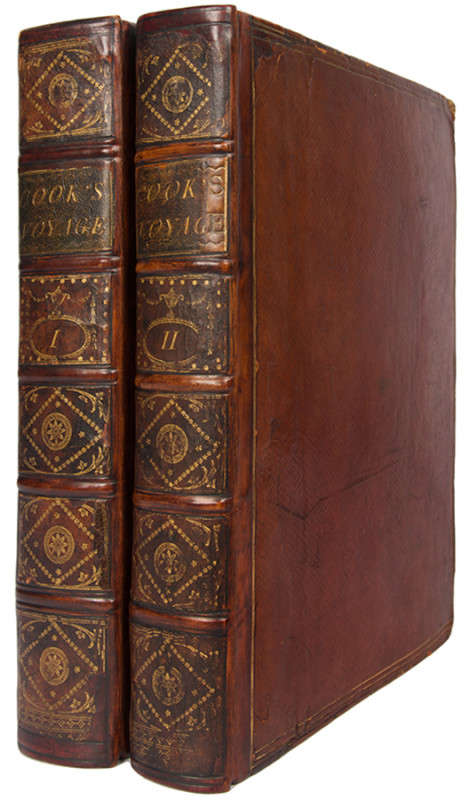The First(-Third) Parts of the Principles of the Art Military... 1637(?), 1638 and 1640 [bound with] A true and historiall relation of the bloody battell of Nieuport... 1641.
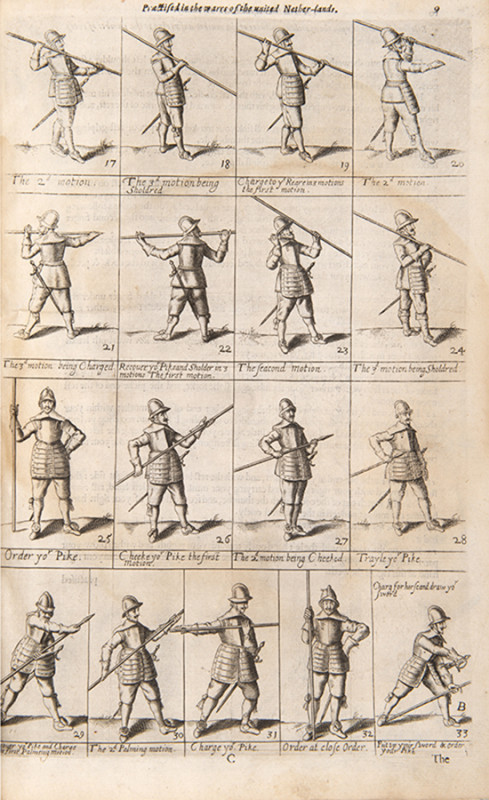





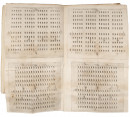

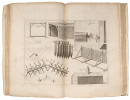



Book Description
4 works in 1 vol., folio (34 x 22.5 cm); bookplate to front pastedown, new endpapers, contemporary vellum, MS title in pen to spine, a little soiled, tears with loss to spine and upper panel, repair to spine head, clasps partially preserved; [Art Military] 3 parts: second edition of part 1, first edition reissue of part 2, first edition of part 3; inscriptions in pen, including dated ownership inscription recording price, to front blank f. recto; [part 1] woodcut device to title, 55 engraved illustrations including folding, waterstaining to front blank and prelims; [4], 48, [2]pp; [part 2]: woodcut device to title, reissue with cancel quire pi, 17 engraved plates (15 double-page); [4], 18, 40pp; [part 3]: woodcut device to title, pp47-50 on small paper, 18 engraved plates and illustrations; [8], 18, [2], 45-48, 25-33, [1], 37-40, 21-28, 47-50, [4], 75, [2], 80-81, [1]pp; [Nieuport] first edition, pp13-16 and 21-28 on small paper, 2 folding engraved plates; [2], 28pp.
Dealer Notes
A rare mixed edition issue of Henry Hexham’s Principles of the Art Military, superbly illustrated with 90 engraved plates and illustrations of drill movements, marching formations, battle orders, castrametation, ordinance designs, and ballistics, including a pictorial guide on the use of pike and musket, bound with a scarce historical account of the Bloody Battell of Nieuport attributed to Hexham.
Comprising the rare true second edition of part 1, unrecorded in ESTC — we can trace only one other copy at the library of the United States Military Academy, West Point — the first edition reissue of part 2, and the first edition of part 3.
Hexham began his career as a page in the service of Sir Francis Vere, commander of the English troops in the United Provinces, and fought with him at the siege of Ostend in 1601. He remained in Holland, publishing a series of Protestant tracts, before continuing his military career as quartermaster for Vere’s regiment at the relief of Breda in 1625, the siege of s’-Hertogenbosh in 1629, and the siege of Maastricht in 1631. He later served as quartermaster to George Goring at the siege of Breda in 1637.
From 1630 he began to publish technical military works and battle narratives, the most important of which is his Principles of the Art Military. In Hexham’s own words, this work deals with: in the first part ‘the dutie, and office of a capitaine, his inferiour officers... the ordering of a regiment... and articles of marshall discipline’, in the second the ‘duties of the officers of the field, and the diverse formes of ranging horse and foote in battle-ray’, and in the third and final part with the ‘place & office of the Master (or Generall) of the Ordinance Munition, Engines, Instruments, Materials, and all necessarie preparations, and Equipage, belonging to an Armie’ (see Hexham’s translation of Marolois’ Art of Fortification).
The second work relates the Anglo-Dutch victory at Nieuwpoort in July 1600, where forces under the command of the future Prince of Orange, Maurice of Nassau, and Vere routed a Spanish army on the sand dunes in western Flanders, suffixed with a short description of the siege at Ostend in which Hexham served under the English general. ESTC locates only three copies of the work worldwide at Chatsworth House, Trinity College, Dublin, and the British Library.
Comprising the rare true second edition of part 1, unrecorded in ESTC — we can trace only one other copy at the library of the United States Military Academy, West Point — the first edition reissue of part 2, and the first edition of part 3.
Hexham began his career as a page in the service of Sir Francis Vere, commander of the English troops in the United Provinces, and fought with him at the siege of Ostend in 1601. He remained in Holland, publishing a series of Protestant tracts, before continuing his military career as quartermaster for Vere’s regiment at the relief of Breda in 1625, the siege of s’-Hertogenbosh in 1629, and the siege of Maastricht in 1631. He later served as quartermaster to George Goring at the siege of Breda in 1637.
From 1630 he began to publish technical military works and battle narratives, the most important of which is his Principles of the Art Military. In Hexham’s own words, this work deals with: in the first part ‘the dutie, and office of a capitaine, his inferiour officers... the ordering of a regiment... and articles of marshall discipline’, in the second the ‘duties of the officers of the field, and the diverse formes of ranging horse and foote in battle-ray’, and in the third and final part with the ‘place & office of the Master (or Generall) of the Ordinance Munition, Engines, Instruments, Materials, and all necessarie preparations, and Equipage, belonging to an Armie’ (see Hexham’s translation of Marolois’ Art of Fortification).
The second work relates the Anglo-Dutch victory at Nieuwpoort in July 1600, where forces under the command of the future Prince of Orange, Maurice of Nassau, and Vere routed a Spanish army on the sand dunes in western Flanders, suffixed with a short description of the siege at Ostend in which Hexham served under the English general. ESTC locates only three copies of the work worldwide at Chatsworth House, Trinity College, Dublin, and the British Library.
Author
HEXHAM, Henry.
Date
1637-1641.
Publisher
[Delft(?)], printed by J.M. for Robert Young, n.d. [1637(?)] et al.
Friends of the PBFA
For £10 get free entry to our fairs, updates from the PBFA and more.
Please email info@pbfa.org for more information
